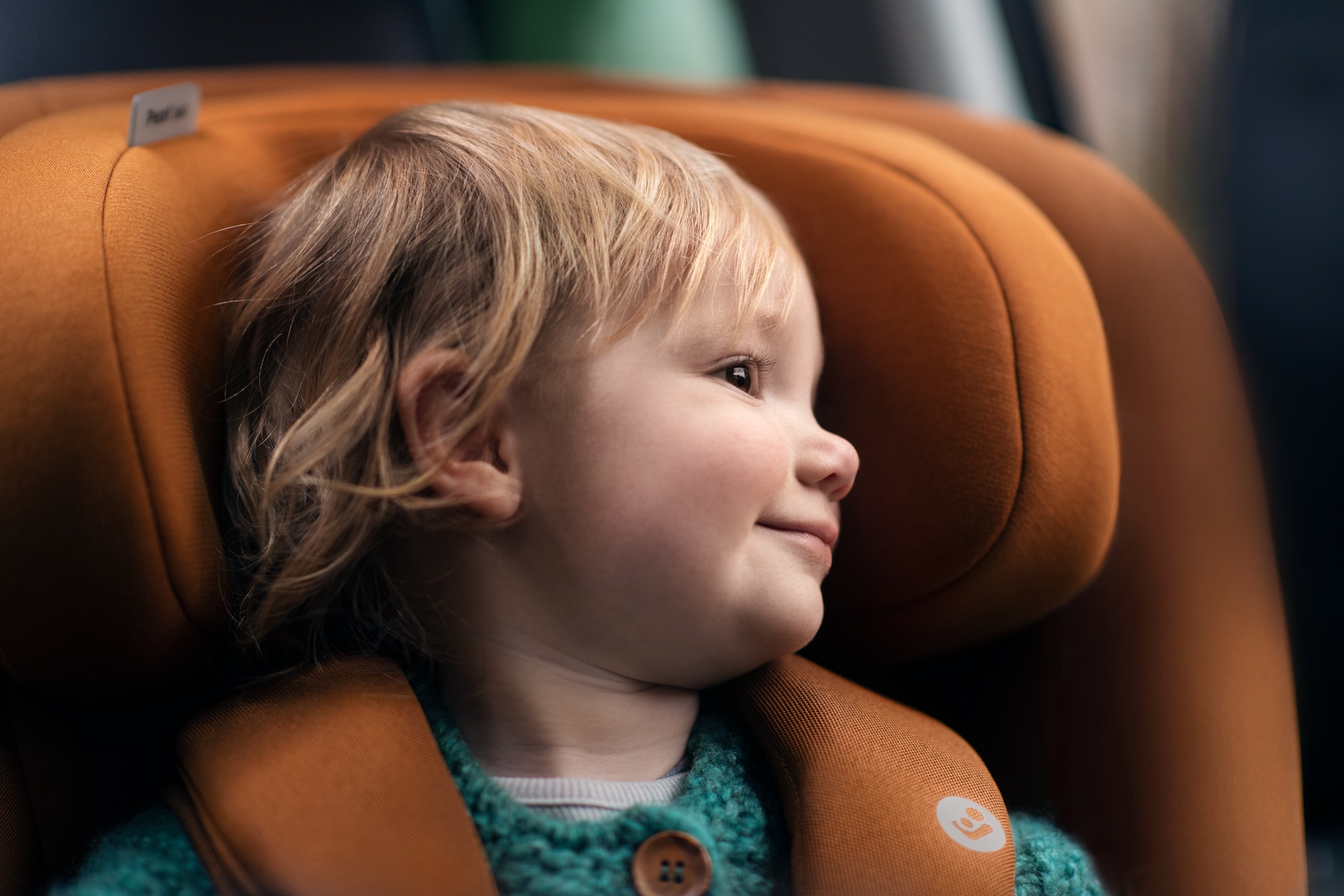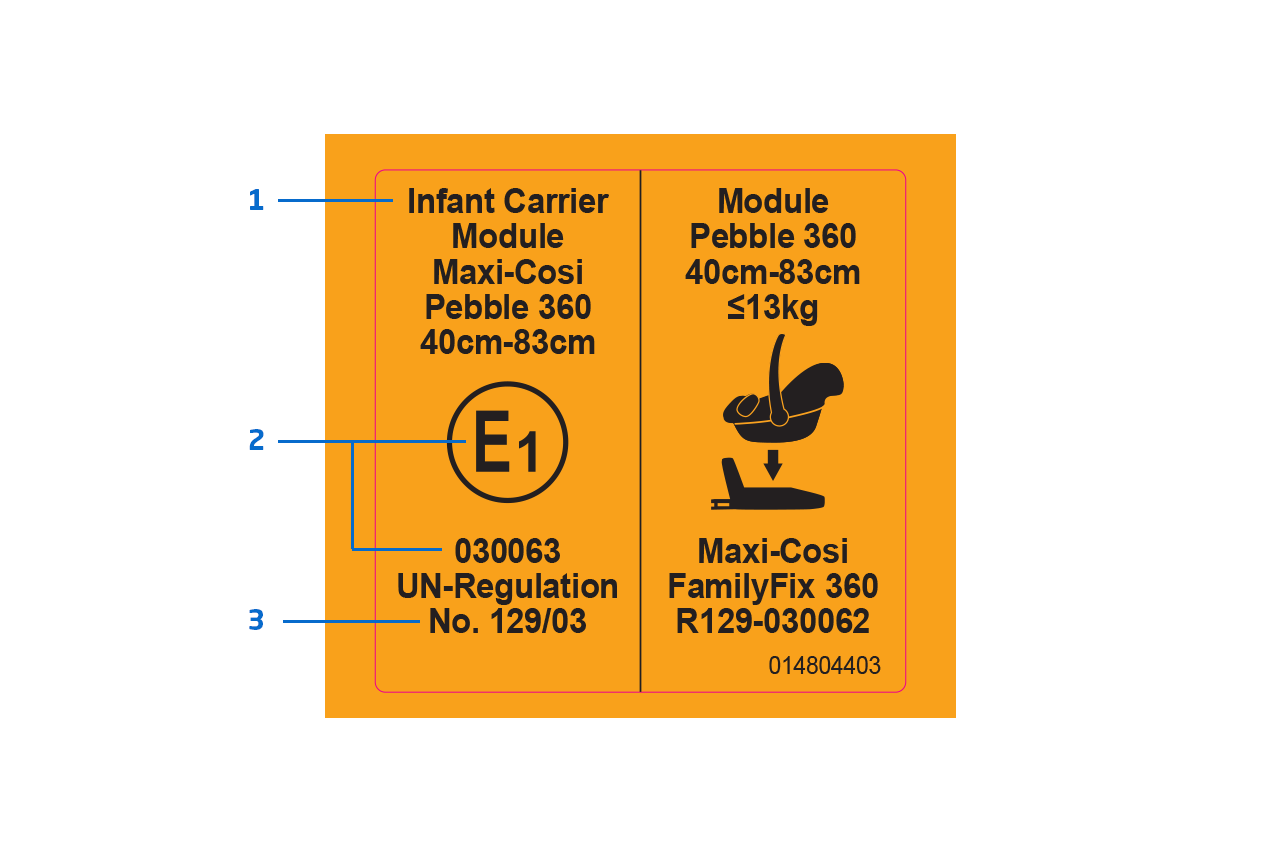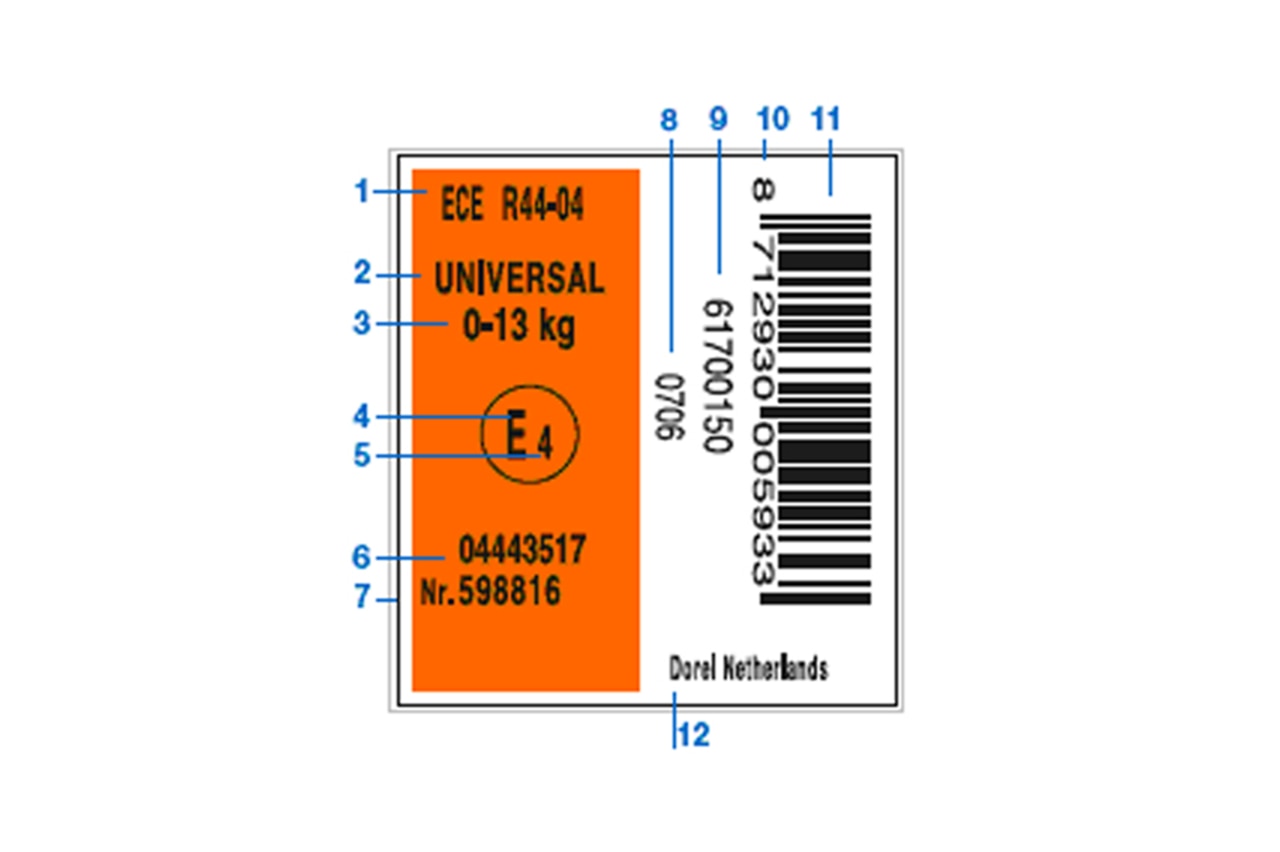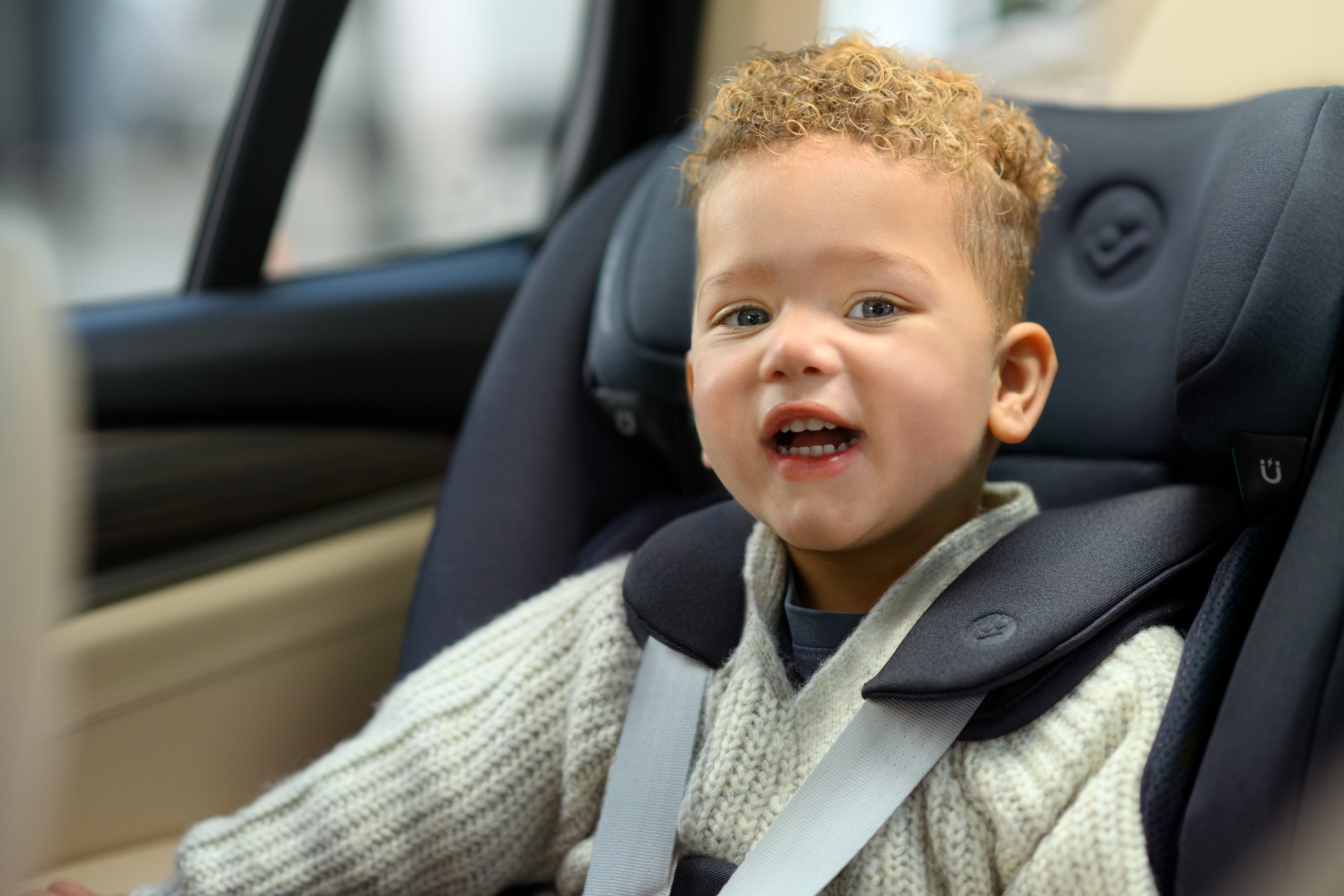

Car seat safety rules explained: What does the orange label on your car seat mean?
Have you ever wondered what the orange label on your car seat is there for? This label confirms that your car seat is secure and gives details about the safety standards it conforms to:
- R129, also known as i-Size, is the latest safety standard. At Maxi-Cosi, we highly recommend you choose a car seat that follows this regulation. Read more about the latest laws and rules for car seats here.
- An older standard, R44, is also available.
Questions
Where to find the orange label?
Take a look under or on the side of the car seat to find the printed orange label. An orange label guarantees that the car seat complies with the basic safety requirements as set out in the European safety standard.
What is the difference between R44 and R129 car seats?
R129 car seats are the most recent standard, having been introduced in 2013. They have undergone more rigorous testing and provide improved head and neck protection compared to the R44 standard. R44 car seats are based on the weight of your child, while R129 car seats are based on the height of your child. To find out more about the differences between R44 and R129, click here.
Although current child car seat laws allow the use of either R44 or an R129 car seats, we at Maxi-Cosi recommend choosing a R129 car seat.
Is i-Size the same than R129?
Yes. R129 car seats include the “i-Size” category which guarantees that the seats will fit in vehicles with an i-Size seating position. Note that some car seats are really big and may not fit in your vehicle's i-Size seating position; these larger seats are still tested R129, but cannot be called “i-Size”.
Can my child travel in any car seat?
No. Make sure to respect the information written on your car seat and added on the orange label too.
-
R129 car seats are marked with the size range of children for which they are suited. When using the car seat, you must ensure that your child is not smaller or taller than the given size range.
-
R44 car seats are divided into groups that are suitable for different sized children. These groups are 0+ (birth to 13 kg), 1 (9 to 18 kg), or 2/3 (15 to 36 kg). You must choose the right group car seat for your child's size. Bare in mind that all children must travel facing the rear of the vehicle until they are 9 kg.
Can a R44 car seat also comply with the i-Size regulation?
No. The orange label either indicates that the car seat complies with the R44 regulation or with the R129 safety standard. R129 offers an even better safety performance.
What can you learn from the orange label?
By law, you need to use a car seat displaying the European Standard orange label, indicating approval to the R44 or R129 standard. It is not allowed to use a car seat that does not have one of these labels.
Also, take a close look at the R44 car seat orange label. It should be followed by 03 or 04. A car seat that was manufactured before 1995 and approved to the R44/01 or R44/02 standard is no longer to be used because they are unsafe to today’s standards.
What does the orange approval label tell me about my seat?

R129 orange label
-
The orange label indicates the brand and type of car seat, as well as the size range.
-
The R129/03 identifies the Regulation to which it is tested (R129) and the version of the regulation (3rd update).
-
The E1 and '030063' numbers are linking the car seat to its government testing reports.

R44 orange label
-
Your seat meets the European Safety Standard. Note the last two digits: these should end in 04 (latest version) or 03. R44-01 or 02 are not to be used since 2008 because they are unsafe to today’s standards.
-
For R44-04 or R44-03, there are three types of car seat approval: universal, semi-universal and vehicle specific. ‘Universal’ means your seat is approved for installation in all cars, although you should check that the seat fits well in your vehicle. See below for more details on ‘Type Labelling’.
-
Approval for weight (group). Sometimes, a letter Y is added here meaning that the child seat features a harness system with a crotch strap.
-
European approval indicator.
-
Indicates the country in which the approval was obtained: 1=Germany 2=France 3=Italy 4=the Netherlands etc.
-
Approval number. The first two numbers (04) show to which version the child seat has been approved, in this case R44/04.
-
Unique number allocated to your specific seat, for testing and tracking.
-
Production details: week and year, in this case, week 7, 2006.
-
Manufacturer article reference number.
-
EAN code
-
BAR code
-
Name of the product manufacturer
Type Labelling
There are three types of car seat approvals: universal, semi-universal and vehicle specific, which you can use to find out if the car seat will fit your car.
- Universal approval
If there is a universal approval label, it means the seat is suitable to be used in any car. You must use the ISOFIX anchorage points in your car, including the top tether or foot support, if it is an ISOFIX car seat. If you're not sure, take a look in your vehicle’s handbook to see if it says the car is suitable for "Universal ISOFIX child seats". For your peace of mind, all Maxi-Cosi car seats have universal approval. Take a look at our range here.
- Semi-universal approval
If the car seat is marked semi-universal approval, it means it can be used in most vehicles. For your peace of mind, you need to check the child seat manufacturer’s car fitting list. If your car type and model is listed, you can be confident it is suitable.
- Vehicle specific approval
A vehicle specific car seat is only approved for use in these cars. The car must be listed in the child seat manufacturer’s car fitting list.

